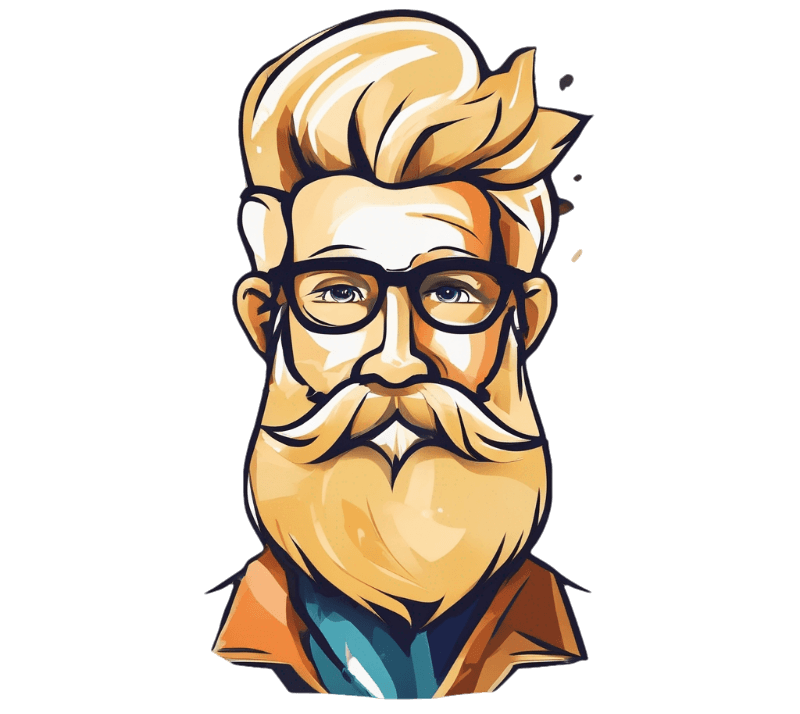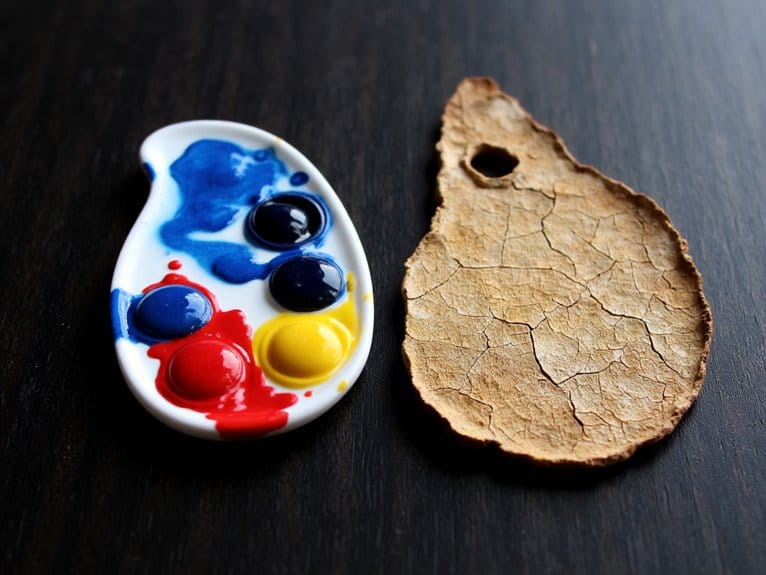We are supported by our audience. When you purchase through links on our site, we may earn an affiliate commission, at no extra cost for you. Learn more. Last update on 3rd July 2025 / Images from Amazon Product Advertising API.
I’ve perfected the art of painting fantastic skulls by employing stippling for dynamic textures, choosing the ideal colors for harmony, and embracing contrast for striking visuals. Layering methods have assisted me in achieving depth, while blending has allowed for seamless shifts and depth perception enhancements. By incorporating gradients and shadows, I’ve produced a 3D effect that brings my skulls to life. Get ready to discover the secrets to igniting your skull painting skills!
Stippling Technique Basics
When learning the stippling technique basics for painting great skulls, I find that tapping the brush down to create a pointy texture is key for achieving realistic bone textures. This method is especially effective in miniature painting, where detail is essential for creating lifelike skulls. By mastering the stippling technique, you can elevate your painting skills and bring your skulls to life with textured results that impress viewers.
One of the beauties of stippling is how it allows you to play with light colors over deep base coats to achieve a realistic effect. This technique involves using the flat of the brush to lay down colors, creating intricate textures that mimic the natural look of bones. It’s all about experimenting and finding the right balance between colors to enhance the details of your skulls.
What I love most about stippling is its versatility. You can even try stippling while the colors are still wet to achieve a gummy effect on the skull’s surface, adding an extra layer of depth to your painting. So, don’t be afraid to get creative and push the boundaries of your skills with this technique. With dedication and practice, you’ll soon be painting skulls with a level of detail and realism that will leave everyone in awe.
Choosing the Right Colors
When selecting the appropriate colors for painting skulls, it’s essential to ponder color harmony and contrast selection. Opting for shades that complement each other will elevate the skull’s overall appearance. By experimenting with various color combinations, you can bring out distinctive and enthralling details in your artwork.
Color Harmony
Color harmony is vital for creating a visually striking and cohesive skull painting that captivates the viewer. When selecting the appropriate colors for your skull masterpiece, we must guarantee they work harmoniously together. To accomplish this, make sure you consider the following tips:
- Choose colors that complement each other, like warm browns and cool grays.
- Consider using analogous colors, such as different shades of white and gray, for a cohesive color scheme.
- Contrast light and dark colors to emphasize different parts of the skull.
- Experiment with subtle color variations to add depth and realism to your painting.
- Bear in mind the lighting conditions where the skull will be displayed to ensure the colors look their best in that environment.
Contrast Selection
In selecting the right colors for contrast in your skull painting, I advocate for embracing bold choices that will truly make your artwork stand out. When it comes to creating a striking skull appearance, we’ve got to be essential in our color selection. Consider using contrasting colors like Vallejo buff white and black, or Citadel’s deathroll forest for added depth and impact. The key to a successful skull painting lies in the contrast selection; it’s vital for highlighting different features and bringing the skull to life. Don’t be afraid to experiment with various color combinations to find what works best for you. Remember, strategically utilizing light and dark shades will accentuate the skull’s details and textures, creating a visually appealing masterpiece.
Layering for Depth
Adding paint on the skull is like incorporating layers of history and depth to bring out its full potential in a captivating and realistic manner. As an artist, I find that layering is not just about adding color; it’s about creating a story within the artwork. Here are some key points to ponder when layering for depth:
- Textured effects: Experiment with different brush strokes and techniques to create intriguing textures on the skull. This can add a tactile element to your painting and make it more visually engaging.
- Layering tips: Start with a base coat and gradually build up layers of paint to achieve the desired depth. Remember, patience is crucial when layering to make certain each coat dries properly before adding the next.
- Dimensional painting: By strategically layering light and dark shades, you can create the illusion of depth and volume on the skull. Pay attention to how light falls on the skull and use this to guide your layering process.
- Gradual color shifts: Blend colors seamlessly by layering them gradually. This technique helps create smooth shifts between different hues, making the skull appear more realistic and lifelike.
- Highlight and shadow placement: Use layering to define highlights and shadows on the skull. Adding multiple layers of lighter and darker tones can enhance the contrast and make the skull pop with dimension.
Layering not only adds depth and dimension but also allows you to infuse your artwork with emotion and storytelling. Embrace the process and let each layer reveal a new chapter in the skull’s narrative.
Blending Techniques
Experimenting with mixing techniques opens up a world of possibilities for creating seamless shifts and lifelike shadows on the skull painting. By mastering brush strokes and shading techniques, you can elevate your painting to a whole new level. Gradient blending is a key skill to learn, allowing you to smoothly shift between different colors on the skull, enhancing its realism. Utilizing highlighting methods adds depth and dimension to the skull, making it more visually appealing.
When blending, using a soft brush is essential. The gentle bristles help merge colors together seamlessly, resulting in a natural and smooth finish. Dry brushing variations can also be employed to blend colors effectively. Lightly brushing over raised areas of the skull with dry brushing can create subtle changes and emphasize texture.
Whether you opt for wet blending by mixing colors directly on the model or choose dry brushing for a more important approach, blending techniques are vital for achieving the desired look. They add complexity and richness to your painting, ensuring that the skull appears three-dimensional and lifelike. Mastering these techniques will greatly enhance the overall appearance of your skull painting.
Adding Gradients
I absolutely love how gradients can bring a painting to life! Blending colors smoothly not only adds depth but also creates a realistic touch. With the right balance of light and shadow, you can achieve an incredible sense of depth perception in your skull painting.
Blending Colors Smoothly
Blending colors smoothly on a skull involves expertly using a brush to seamlessly mix different hues on the surface, creating a lifelike gradient effect. To achieve seamless blending and enhance artistic expression, consider the following:
- Master Brush Techniques: Experiment with various brush strokes and pressures to create smooth shifts between colors.
- Understand Color Theory: Comprehend how colors interact and merge together to produce the desired gradient effect.
- Embrace Skull Inspiration: Let the unique shape and features of the skull guide your color choices and blending approach.
- Refine Paint Application: Apply thin layers of paint with a gentle hand to build up gradients gradually.
- Express Yourself: Blend colors with confidence, allowing your artistic vision to shine through in the smooth shifts on the skull.
Using Light and Shadow
Enhance the depth and realism of your skull painting by skillfully incorporating light and shadow to create mesmerizing gradients. Highlighting techniques and shading methods play an essential role in achieving a lifelike appearance. Experiment with light placement and shadow positioning to add dimension to your artwork. Utilize stippling with varying pressure to create intricate shadows and highlights, enhancing the skull’s features. By blending colors smoothly using a soft brush, you can seamlessly shift between light and dark areas, creating a sense of depth. Layering light colors over dark base coats and adding white over black will help you create striking contrasts, further emphasizing the skull’s details. Mastering these techniques will allow you to craft a captivating skull painting with a realistic depth illusion.

